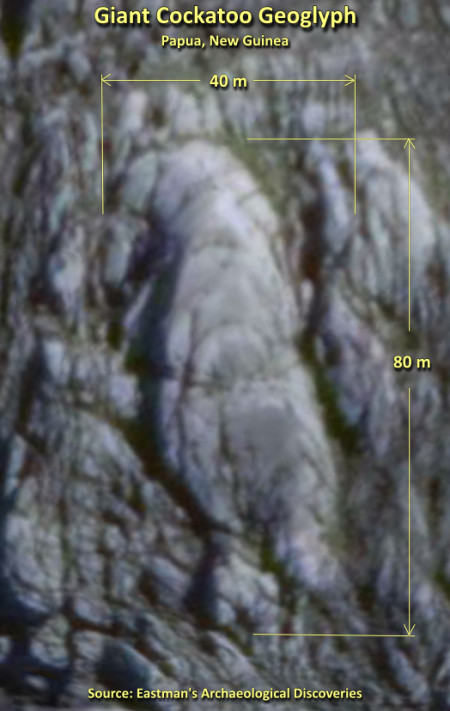Landmark Archeological Discovery Reveals a Shocking History Twist

BRISTOL, Conn., October 22, 2023 (Newswire.com) - In a groundbreaking archaeological revelation that promises to unveil the rich cultural heritage of Papua, New Guinea's indigenous tribes, a colossal geoglyph featuring intricate depictions of birds and an enormous Cockatoo has been unearthed in the remote mountains of Central Papua, New Guinea. These remarkable finds were made possible by the relentless determination of remote explorer Gary Eastman, owner of the "Eastman's Archaeological Discoveries" website, who came upon this ancient masterpiece while searching Google Earth. It is his second landmark discovery of the year, having discovered a giant Thunderbird geoglyph in the United States earlier this year.
A Glimpse into Central Papua, New Guinea's Tribal History
Central Papua, New Guinea, has been home to indigenous tribes for millennia. These resilient communities have thrived in the lush and challenging terrain, developing unique cultures deeply intertwined with their natural surroundings. While they have been known for their mastery of other crafts, such as weaving and pottery, the ancient indigenous natives of Papua, New Guinea, working with stone has remained a mystery until now.
A Remarkable First: Indigenous Stone Working Mastery
This astonishing discovery marks the first concrete evidence of the ancient indigenous natives of Papua, New Guinea, working in stone. For centuries, these ingenious artisans have harnessed the materials provided by their environment to craft tools, sculptures, and structures of immense beauty and significance. Their newfound stone craftsmanship reflects an intimate knowledge of their surroundings and an unbreakable connection to the earth beneath their feet.
The Spectacular Geoglyph Unveiled
This newly discovered geoglyph is an astonishing testament to the creativity, precision, and dedication of the indigenous tribes of Papua, New Guinea. The geoglyph, intricately carved in bas-relief, is a hidden treasure that can only be fully appreciated from above, revealing the mastery of these ancient artists.
At its heart stands a gigantic Cockatoo, an awe-inspiring creation measuring approximately 40 meters in width and 80 meters in height. The Cockatoo is surrounded by intricate depictions of birds and early indigenous natives, all realized with remarkable skill in stone working. This geoglyph serves as a time capsule, encapsulating these ancient peoples' stories, beliefs, and artistry.
Results: Bridging the Past and Future
The discovery of this vast geoglyph holds immense promise for the indigenous natives of Papua, New Guinea. It reaffirms their ancestral connections and offers a unique cultural preservation and revival opportunity. The geoglyph stands as a vivid window into their history, spirituality, and artistic prowess, preserving the essence of their culture for future generations.
Immediate protection and conservation of this remarkable find will ensure that indigenous natives and the global community can continue to marvel at this awe-inspiring symbol of Papua, New Guinea's cultural heritage. This discovery highlights the importance of understanding and celebrating the remarkable stories interwoven into the tapestry of our shared human history.
Source: Eastman's Archaeological Discoveries
